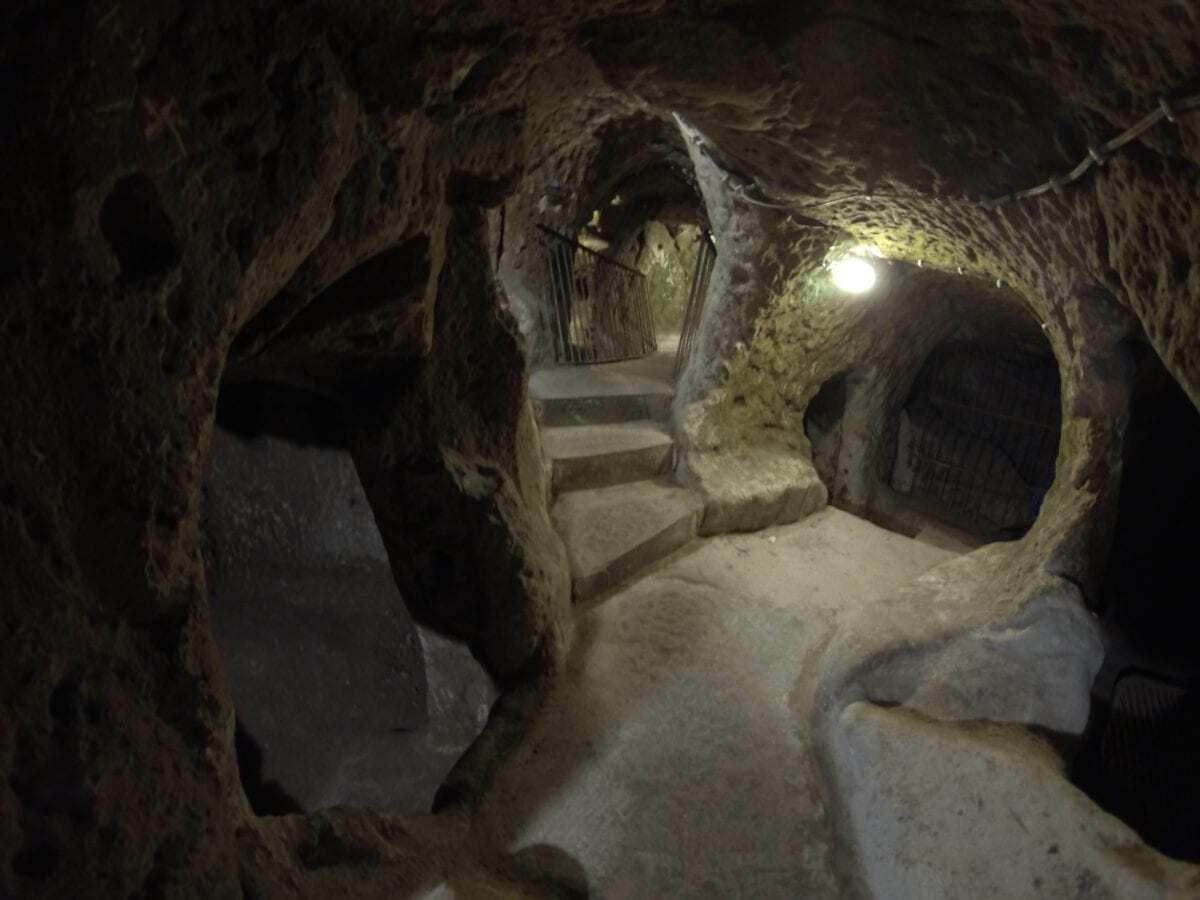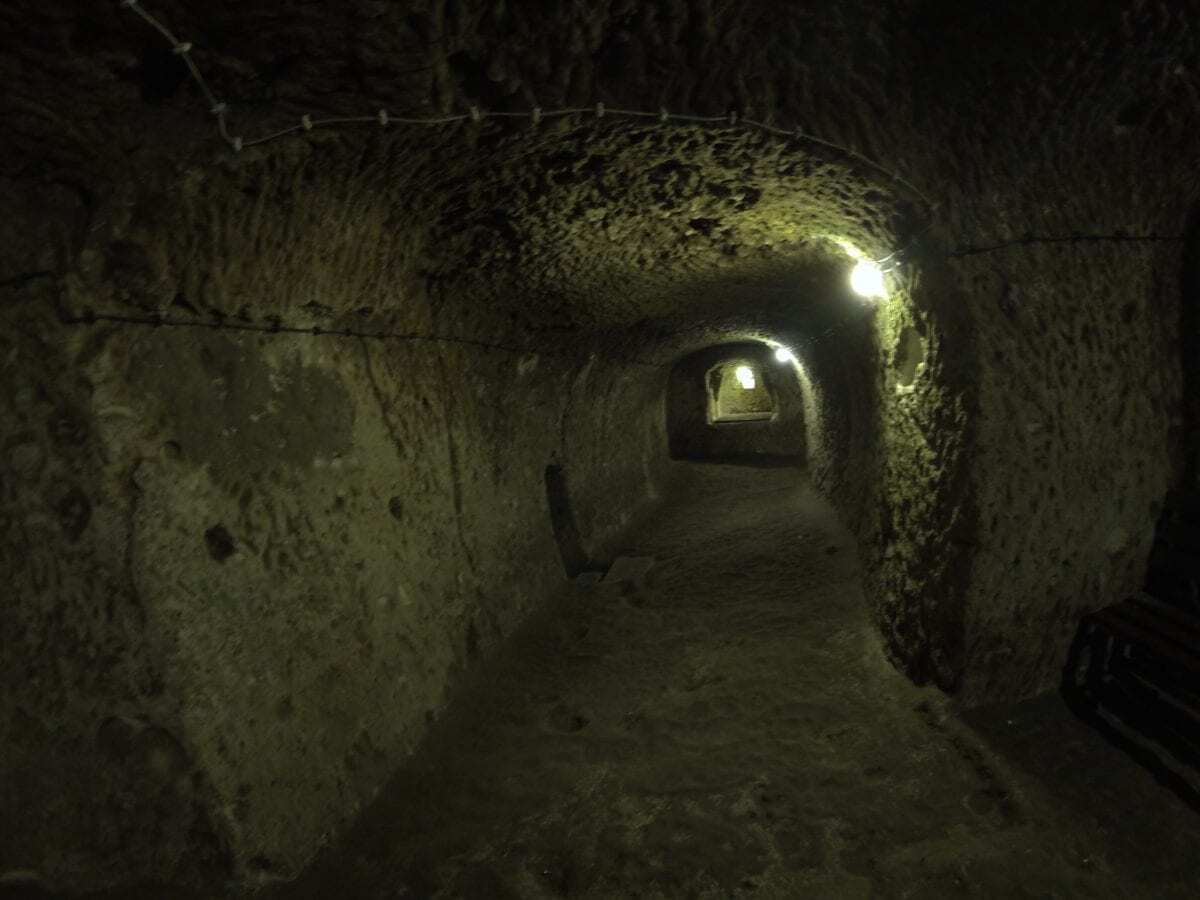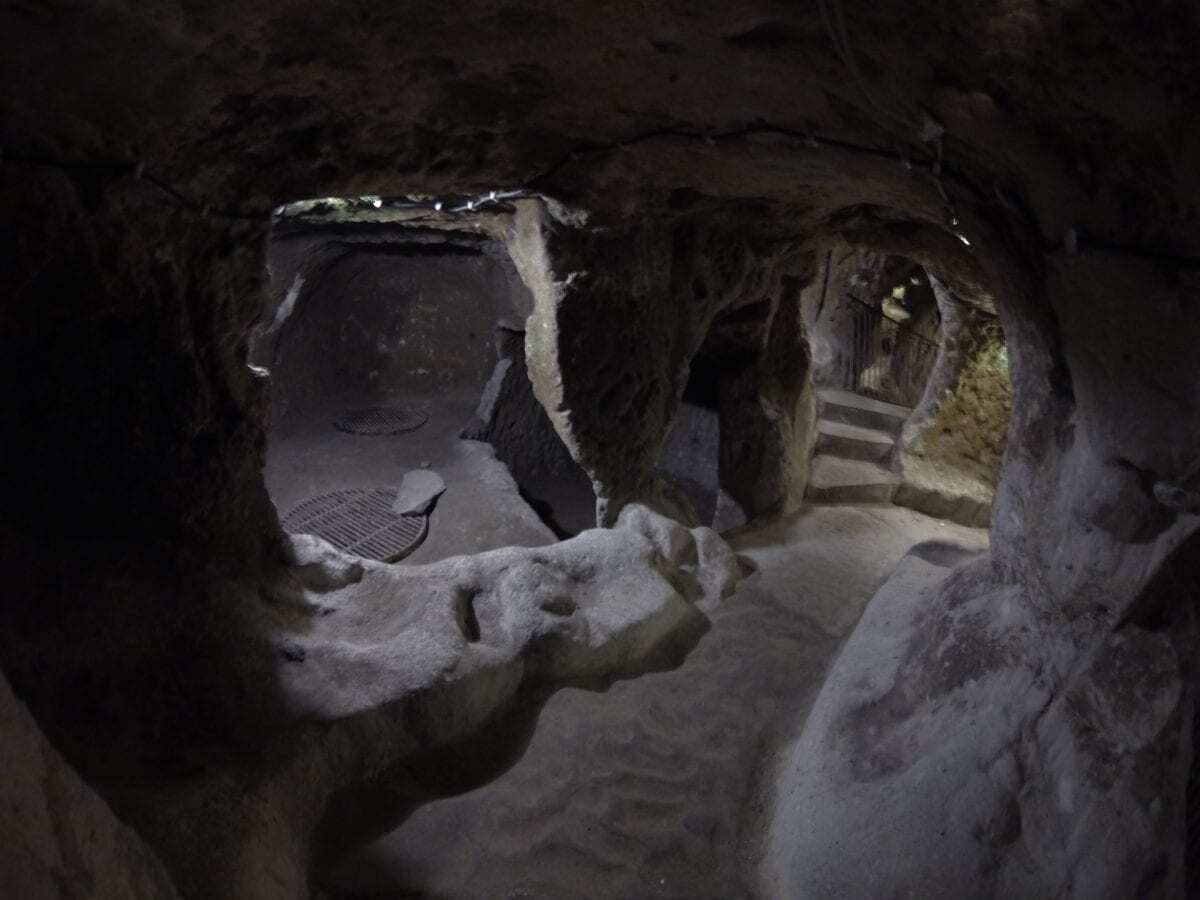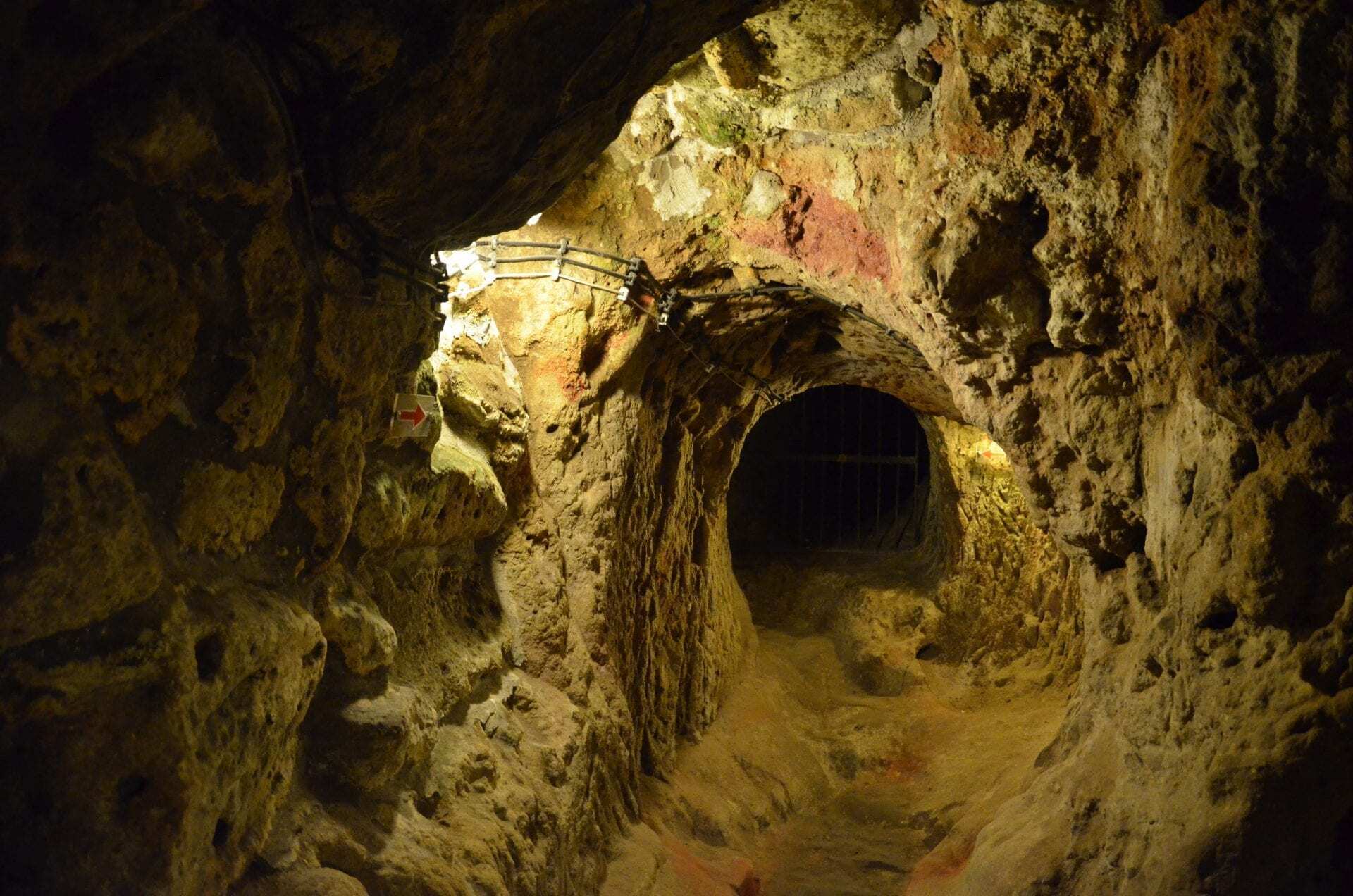Derinkuyu is an underground hive city in the Derinkuyu district, Turkey, one of 36 proposed underground city complexes found throughout the region of Cappadocia.
According to the Turkish Department of Culture, the soft volcanic rock was first excavated by the Phrygians (an Indo-European culture from the 8th–7th century BC) who constructed primitive dwellings, whilst other sources have attributed early construction to the Persians or Hittites.
Later structures were noted by Xenophon of Athens who wrote in his Anabasis (written around 370 BC) that people living in Anatolia had excavated their houses underground, living in accommodations large enough for the family, domestic animals, and supplies of stored food.

By the Byzantine period, Derinkuyu had grown into a substantial 18 storey multi-level complex (as reported in WMCAUS 2016), reaching depths of up to 85metres. The site contains a labyrinth of tunnels and chambers, covering an area of 445 km2 (172 sq miles) that could house a population of up to 20,000 inhabitants.
Like a surface-dwelling at the time, the living quarters comprise of bedrooms, kitchens, bathrooms and often a small shrine. Amenities to support the population include warehouses for the storage of wine and food, oil presses, water cisterns, stables, refectories, chapels and a proposed school.

Access was controlled by carefully balanced circular stone doors resembling millstones, which could close the complex at its various passes and at intersections to hamper intruders. Air was regulated by ventilation ducts that supplied air through a self-propelled system, the largest stretching 55 metres in height.
It is believed that the complex was greatly expanded in the middle Byzantine period to serve as a refuge from the raids of the Umayyad Arab and Abbasid armies, during the Arab–Byzantine wars.

Derinkuyu continued to be used for refuge by Christians hiding from the Mongolian incursions in the 14th century and as late as the 20th century by Cappadocian Greeks to escape periodic wars until it was forgotten from memory with the expelled relocation of Christians by the Turkish government in 1923.
Derinkuyu was rediscovered by accident in 1963 when a resident in the area carried renovations on a modern home that led to the opening of a cave passage to the tunnel system.
Header Image Credit : Ahmet KAYNARPUNAR





